The collection of Magne Bruun (1932-2018)
The collection of ‘Historical gardens and parks in Norway’ was the starting point for the Archive of Norwegian Landscape Architecture. Professor Magne Bruun established this special collection in the 1960s. The collection includes documents, photographs and maps of historical gardens and parks from almost all counties (fylker) in Norway. Using the book Norske haver i gammel og ny tid published in 1916 by the Art historian Carl Wille Schnitler (1897-1926) as the starting point, Bruun and his colleagues surveyed known historical gardens and parks all over the country, collected historical records and interviewed owners or managers of the places. Bruun and his colleagues also recorded the garden plants during their field visits. These source materials since after have become a valuable reference of over 400 historical gardens and parks in Norway.
The collection mainly contains gardens of the former manor houses (herregårder) belonging to wealthy traders, civil servants and nobility. Most of surveyed gardens and parks were established in the late 18th century, and a few dated back to an earlier time. In Norway there are not many resources on the gardens and parks established before 1700.
The recorded gardens and parks differ in size. Some cover large areas of the landscape, such as the garden and park of Rosendal Barony, one of the oldest remaining gardens in Norway.

Some maps contain proposals for the reconstruction, such as for the garden of Hovelsrud. Hovelsrud was restored between 2009-2012, and is now again an important site in Hedmark County. In 2014, the current owner won the Europa Nostra Award (The EU Prize for Cultural Heritage) for the restoration of the house, garden and the landscape. Another proposal for reconstruction shows the alleys between Munkvoll Manor and Havstein Manor close to Trondheim in Sør-Trøndelag County. The area was known for extensive alley-plantings among different manor houses. Here, Bruun made a “reconstruction after Schnitler” based on recent maps and their own surveys in the field.
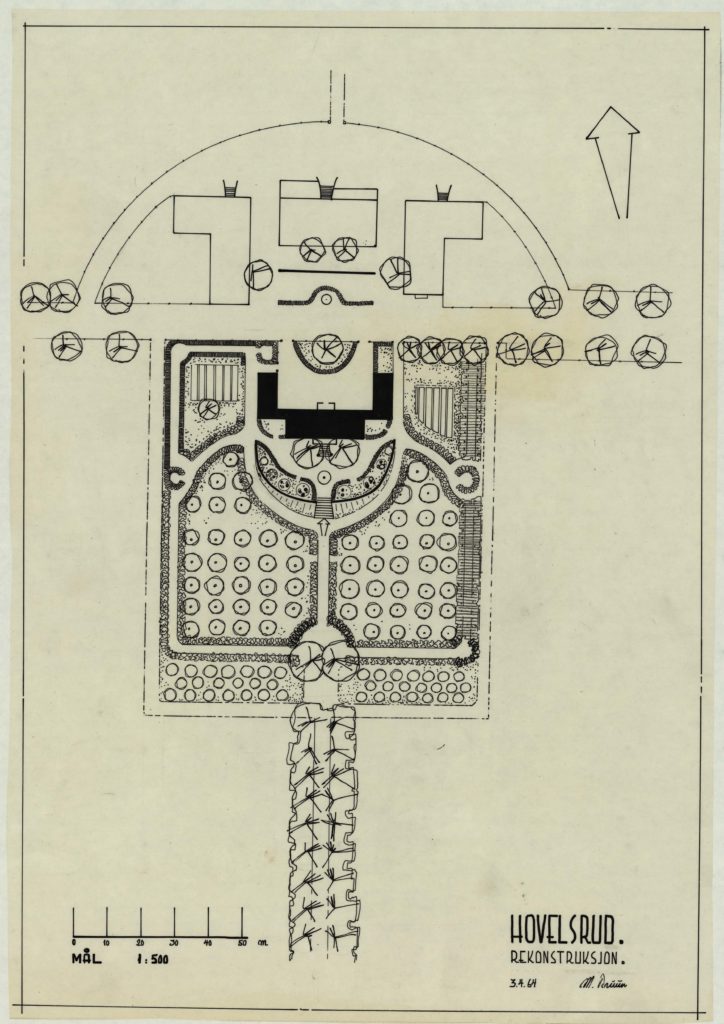
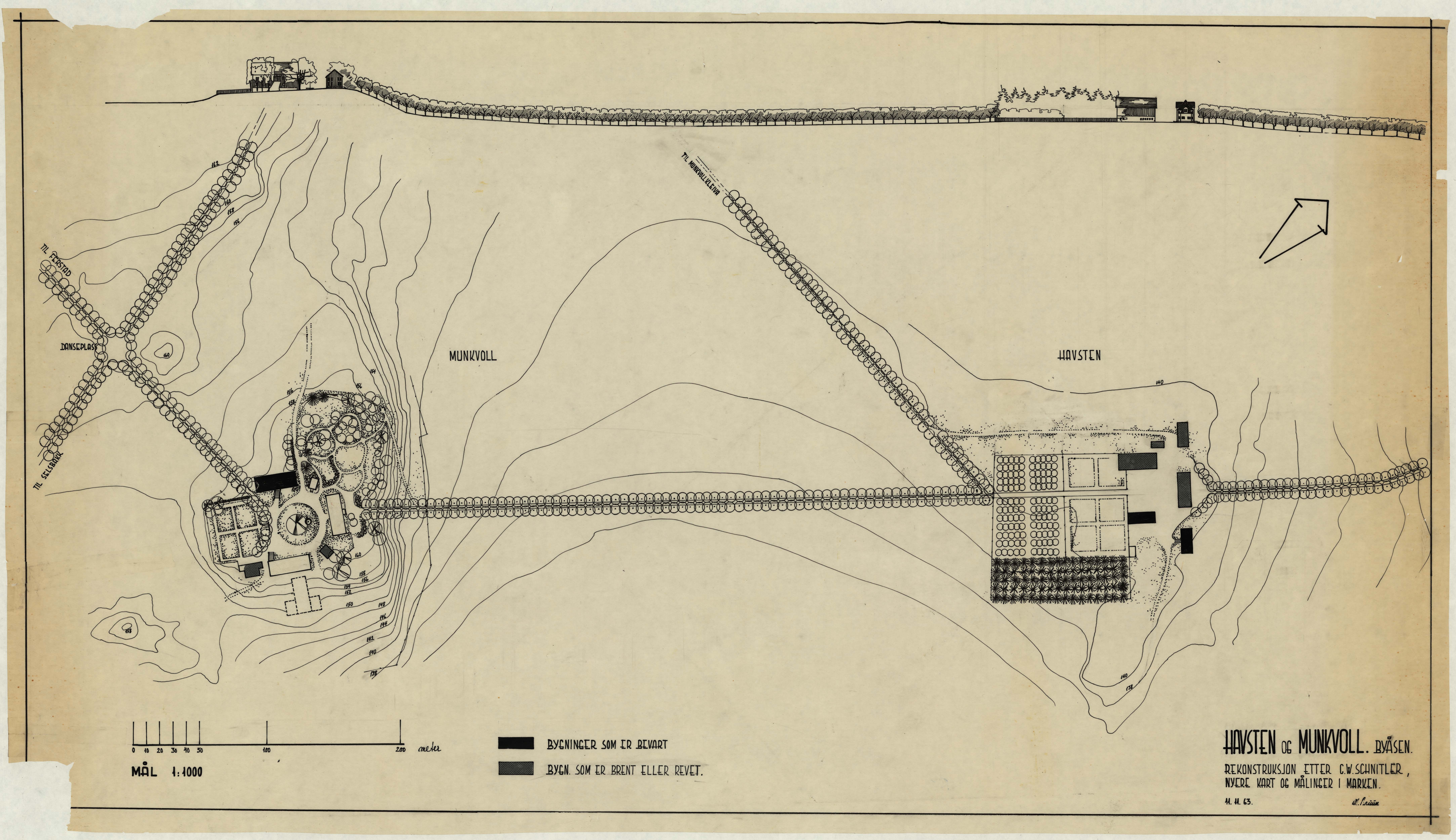
In some cases, Bruun also documented garden buildings and constructions, such as the pleasure house “Helmichs Minde” at Hindal manor in Rogaland County, and the construction of the fountain from around 1870 at Kokkeplassen in Hisøya in Aust-Agder County.

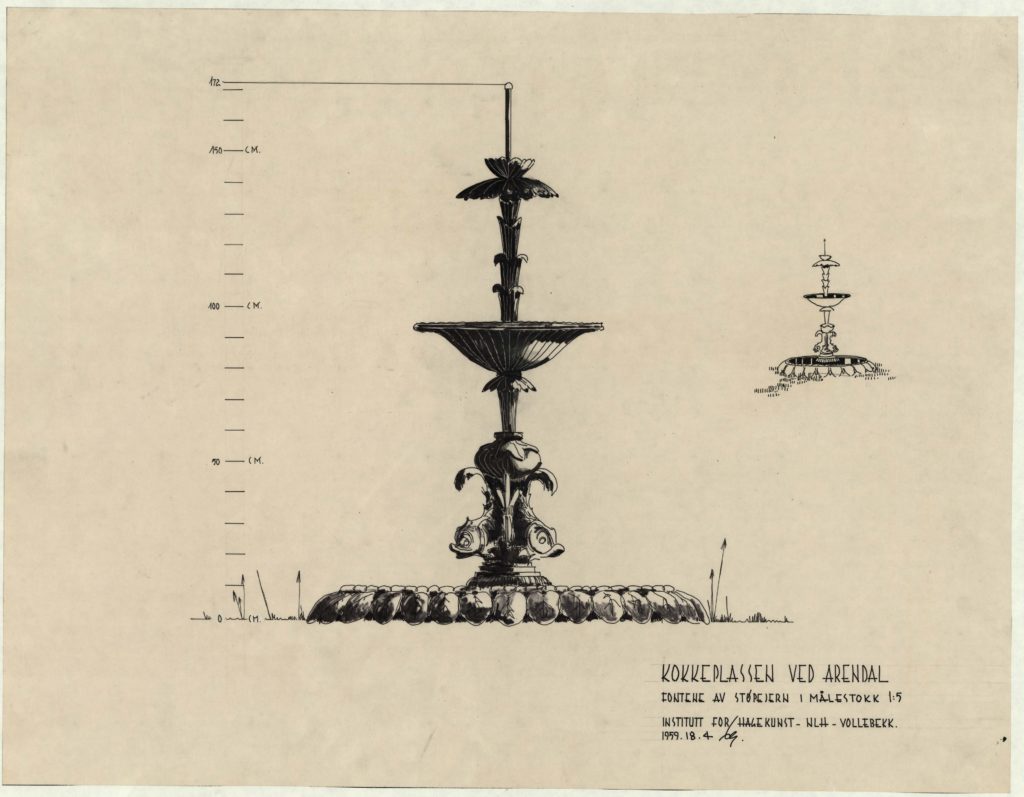
The collection contains a few maps and plans made earlier than 1960, which seem to be materials collected by Bruun. One example is the extension of the Barbu cemetery in Arendal in Aust-Agder County. The plan dates back to 1939 and contains existing graves, location of and price for new graves, and the graves’ relation to the church and the surroundings. The plan is drawn by Ivar Stæger-Holst (1874-1948), who started as a gardener in the region in 1898 and was known for his work of Arendal cemetery. Stæger-Holst was awarded prizes for his garden plans at the County exhibition in Arendal in 1933.
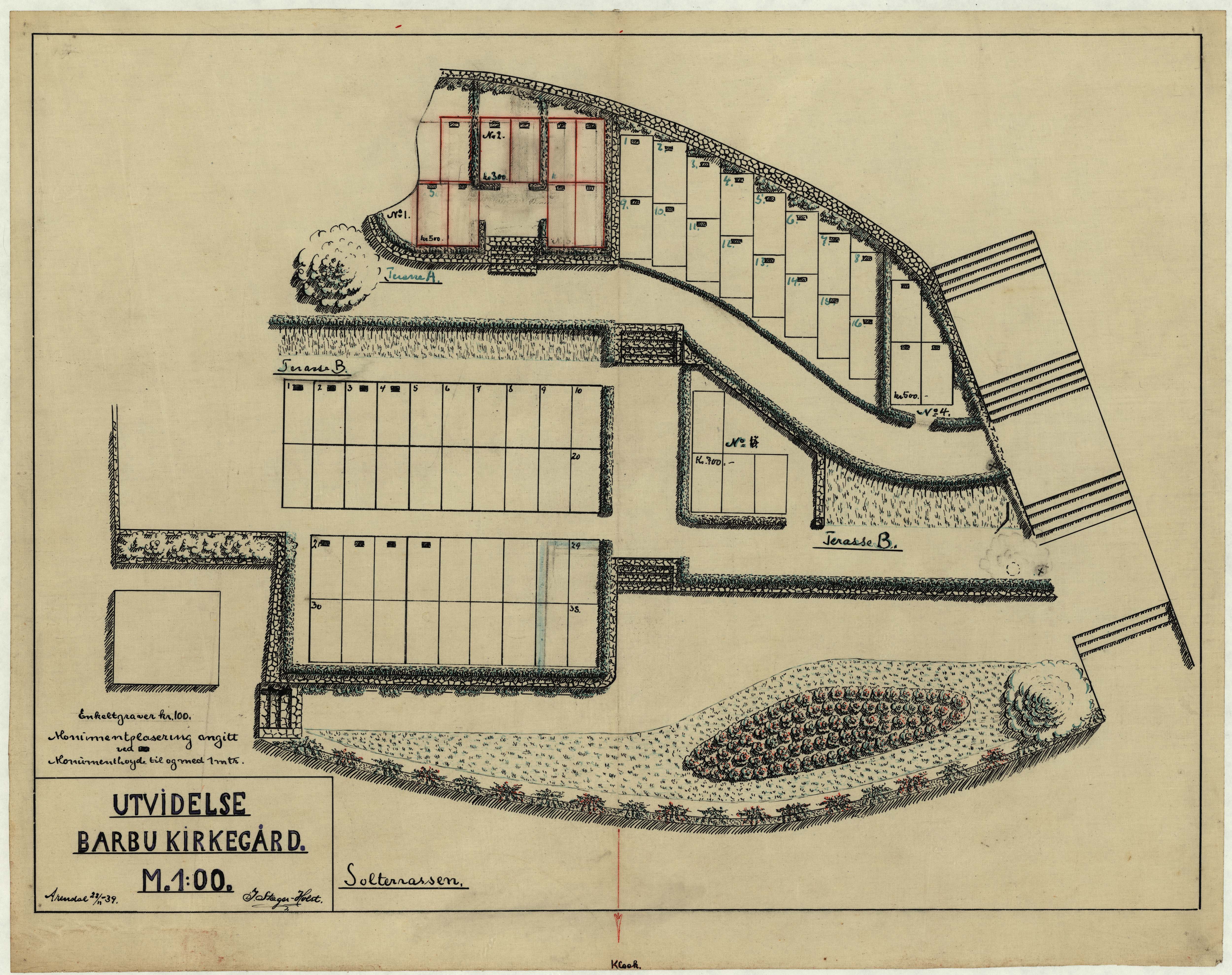
Another example is the manorial garden of Fossum Hovedgaard, Telemark county, with relation to a former large ironworks (Fossum ironworks). Fossum was owned by the Løvenskiold family. The current house and park was established around 1800. This case contains a number of 19th-century maps and plans, as well as a discussion about how the site had evolved.
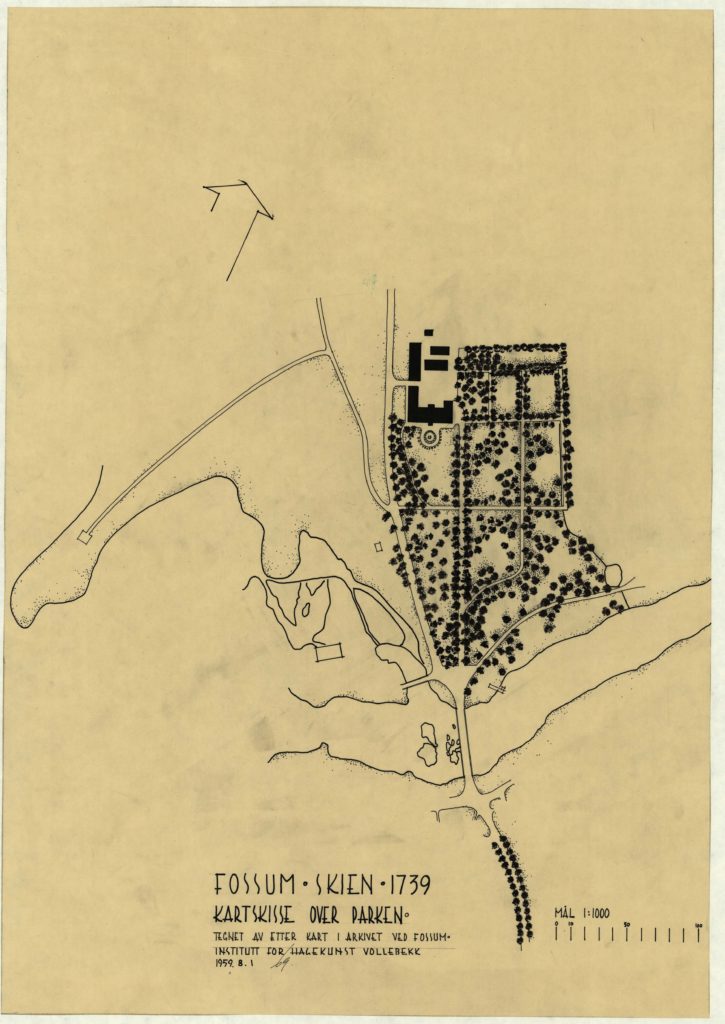
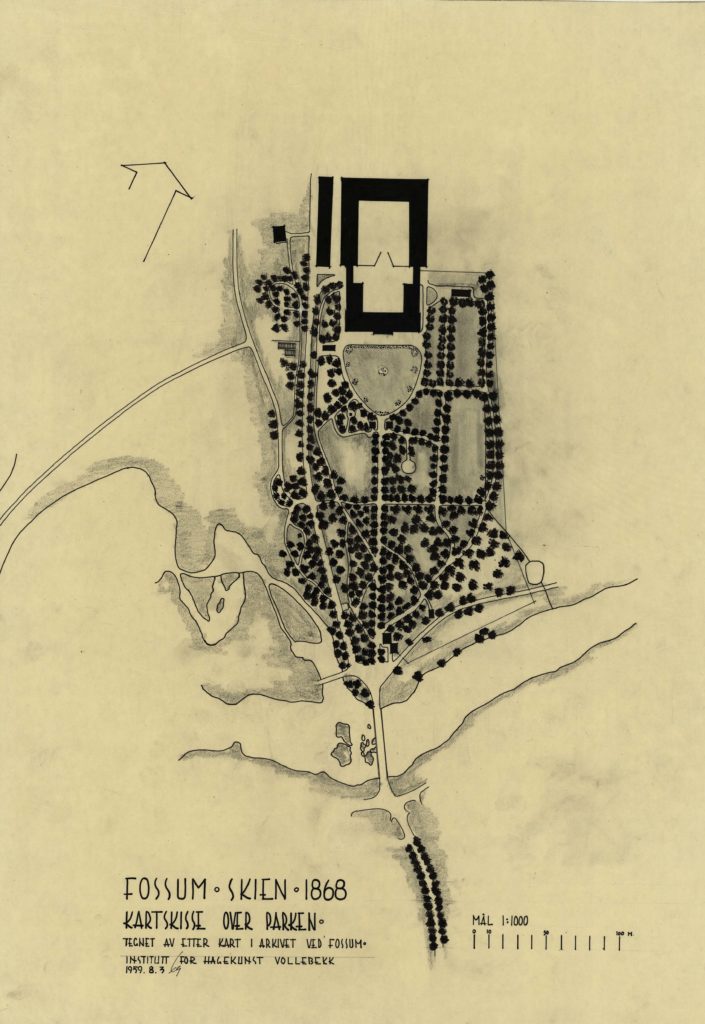
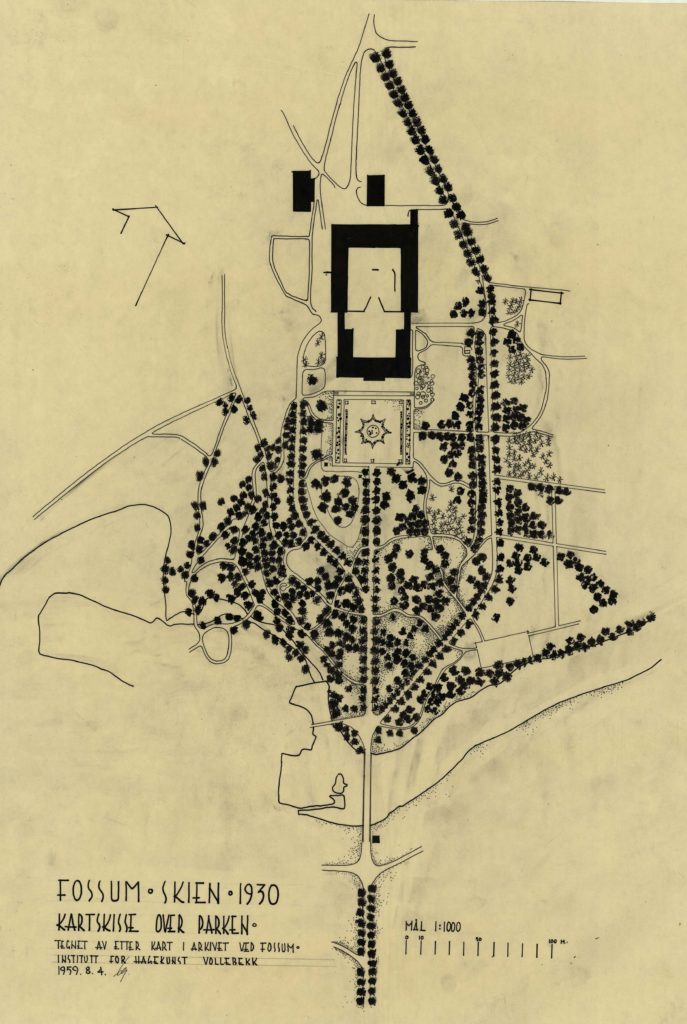
Also interesting is the map of Drammen Slip & Verksted from 1954 – a more contemporary site. The shipyard established in 1924 by Ygnvar Peter Berg and Olav Vold was in 1931 moved to Havnegata in Drammen. In 1949 the company owners converted the area into the workers’ houses, including a park for recreation. The map contains a survey of this park, including the handwritten notes made by Bruun revealing the planting design in the 1950s.
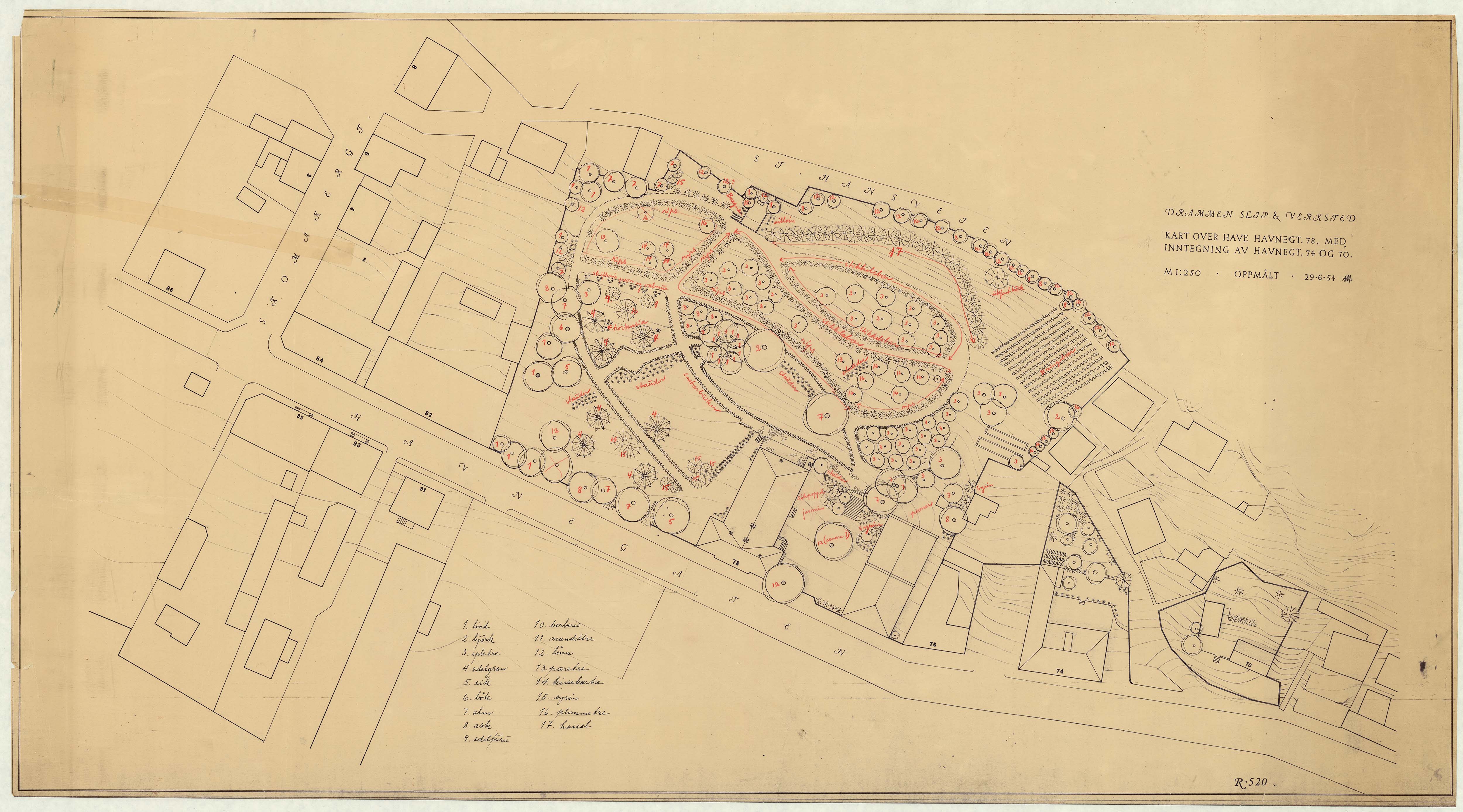
Bruun not only focused on large manors, but also included smaller sites, such as the vicarage (prestegården) in Gjerpen in Telemark County, and the traders place (handelssted) Grøtøy in Nordland County, which is almost 100 km beyond the Arctic Circle in Steigen Municipality.

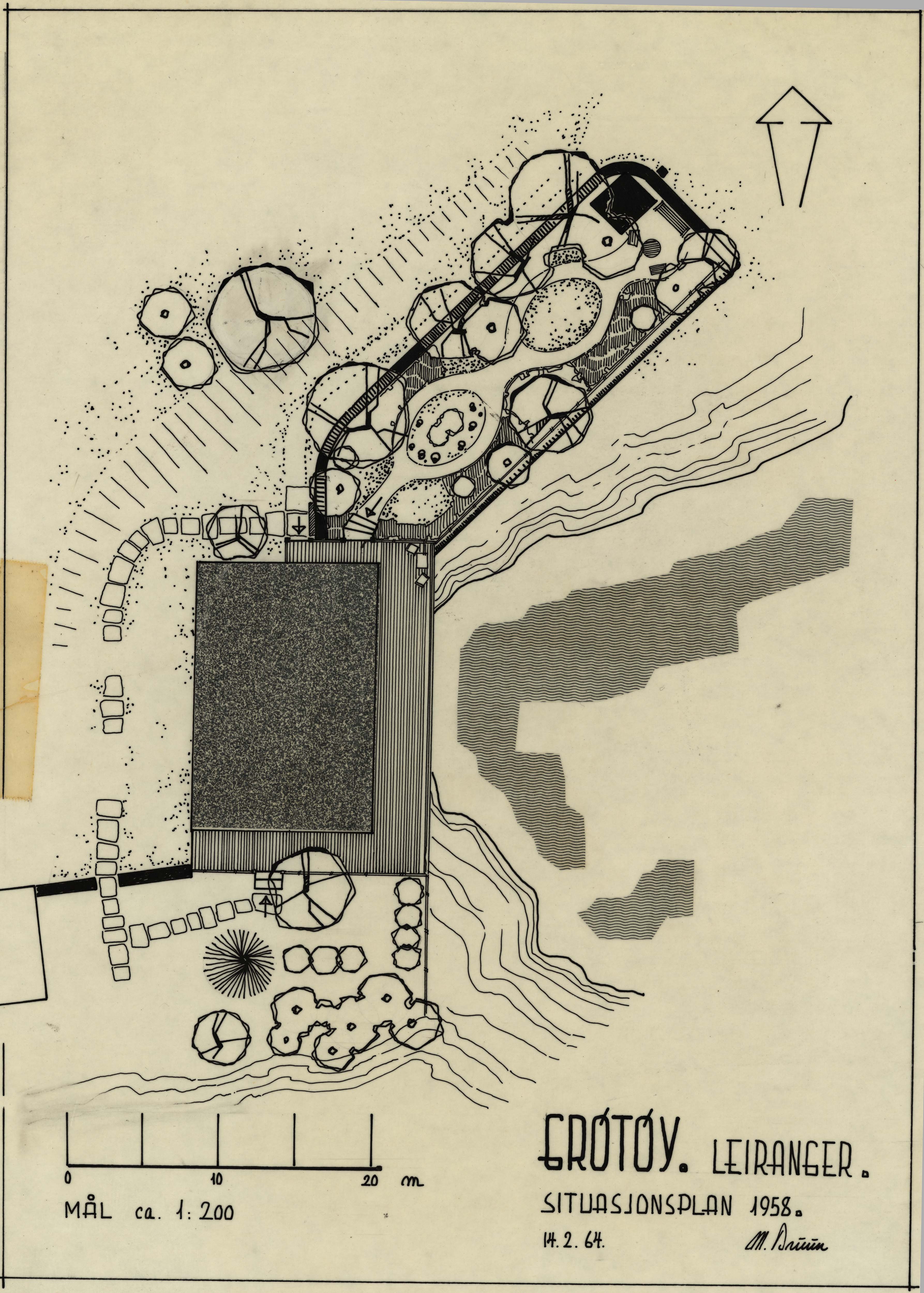
The collection contains gardens and parks from the whole country. 250 maps have been digitalised, and more will be digitalised in the future. A list of digitalised maps can be found here: Bruun_digital. In addition, there is a register that contains written documents, photographs and other records of all 400 historical gardens and parks.
The collection of Magne Bruun has been the source for several Master’s and PhD theses in the country. In the past 20 years, many historical sites in Norway have carried out management and restoration projects, for which the collection has contributed valuable information to investigating the historical background.
In his last book, Norske Hager Gjennom Tusen År (published in 2007), Magne Bruun presented many (but not all) sources from this collection of historical gardens and parks in Norway.
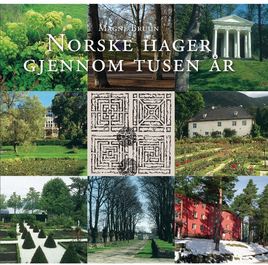
Book cover of Magne Bruuns last book
More literature:
M. Bruun. Norske Hager gjennon Tusen År. Andresen & Butenschøn 2007.
A. Dietze. Garden Art and the Bourgeoisie 1750-1850: social, political and economic aspects of garden art in the south of Norway with a focus on plant import. PhD-thesis UMB (NMBU) 2006.
C.W. Schnitler. Norske Haver i Gammel og Ny Tid. 2 volums. 1916.

Permalink
Arkivmateriale/studentarbeider om parken Langaardsløkken, Briskeby, Oslo
Jeg ønsker å komme i kontakt med professor Annegreth Dietze
på vegne av styret i Foreningen Langaardsløkken – men finner ikke hennes email-adresse. Vi er på leting etter historisk informasjon om denne renessansehagen som et ledd i vårt arbeid med å overbevise kommunen om behovet for oppgradering slik at den kan få tilbake noe av fordums skjønnhet. Parken er mye brukt av innbyggere store deler av året, og følgelig nedslitt og dessuten etter vår mening dårlig vedlikeholdt (Bydel Frogner).
Jeg fikk oppgitt professor Dietzes som naturlig referanse av Tore Edvard Bergaust ved NMBU, men har naturligvis håp om å få noen ref. til materiale også “underveis”, hvis det er mulig?
Mvh Magdalena Eckersberg